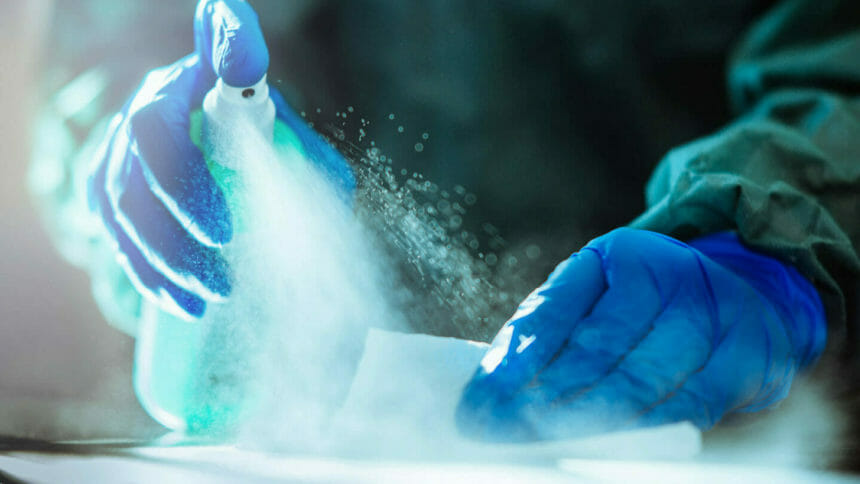
A disinfectant wipe that included an additive to let people temporarily see which surfaces were sanitized led to cleaner rooms and quicker cleaning times, a new study shows.
The report was published Thursday in the American Journal of Infection Control.
Researchers compared hospital room cleanliness using regular disinfectant wipes and wipes that contained a color additive, which shows up blue on surfaces but fades away a few minutes later. Rooms that had surfaces cleaned with the additive-enhanced wipes were 69.2% cleaner and were able to be cleaned in less time compared with regular wipes.
The study was performed at Griffin Hospital in Derby, CT.
Investigators evaluated the status quo for a one-week period using standard wipes to clean surfaces in 10 rooms that were randomly selected. They used the wipes with additives on another 10 randomly chosen rooms.
During both times when rooms were cleaned, investigators sampled surfaces like light switches, toilet seats and sink handles. They looked for microbes before and after the rooms were sanitized.
Before cleaning, 92% of surfaces sampled were positive for microbial colonies. After disinfection, rooms cleaned with standard wipes still had microbes on 60% of surfaces, while rooms cleaned using the color additive had microbes on 31% of surfaces.
Another analysis showed that wipes with the color additive left rooms 69.2% cleaner than the standard wipes. The additive-enhanced wipes lowered the time it took to clean rooms from 39.1 minutes to 36.8 minutes.“Our study is the first to evaluate color additive-supported hospital cleaning based on microbial burden, and the first to measure impact on cleaning times,” Olayinka Oremade, MD, lead author of the study and infection control manager at Griffin Hospital, said in a statement. “Collectively, our results show that providing a simple visual cue makes an enormous difference in room cleanliness, and it seems to allow cleaning teams to be a bit more efficient in the room turnover process as well.”




